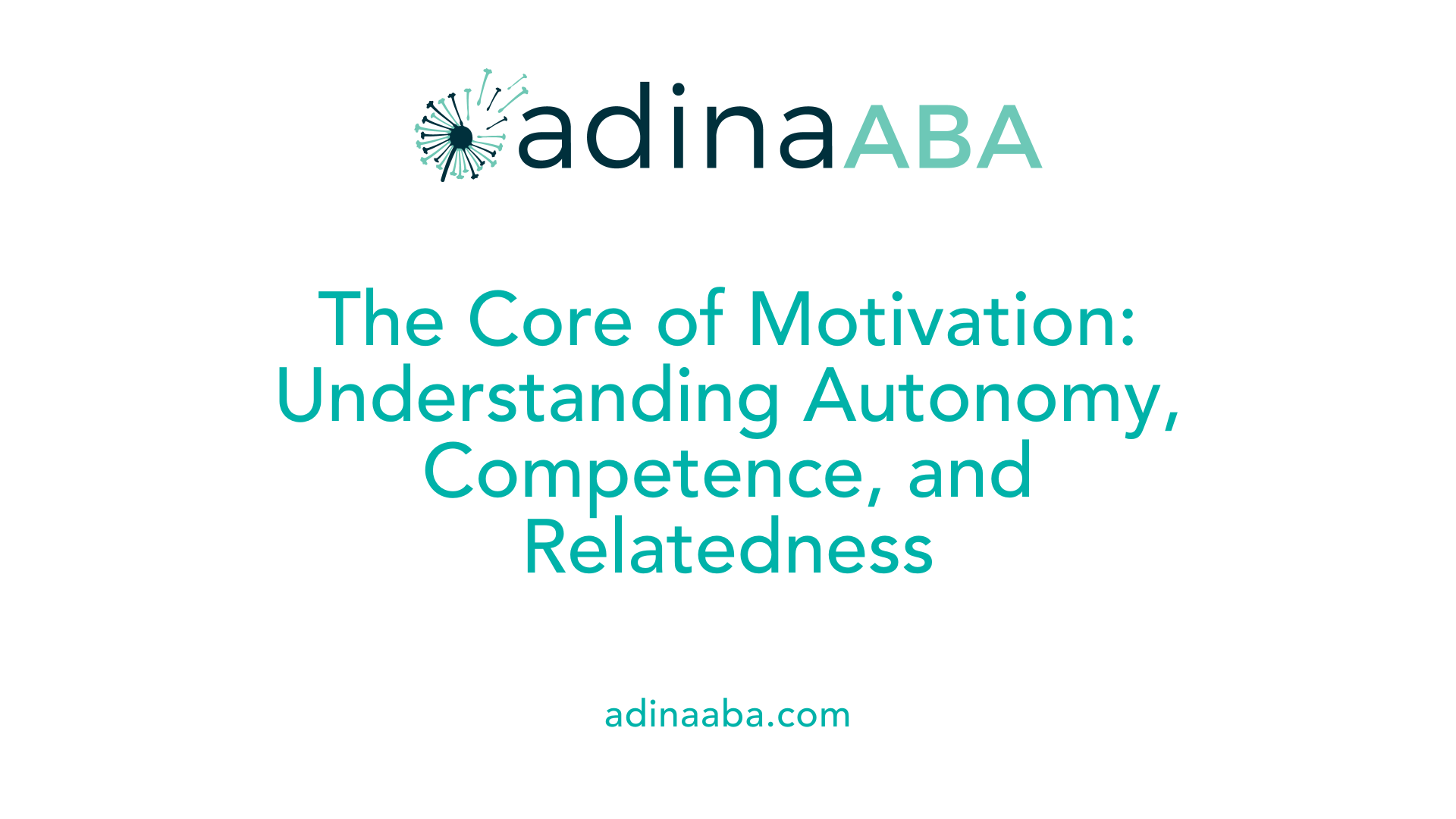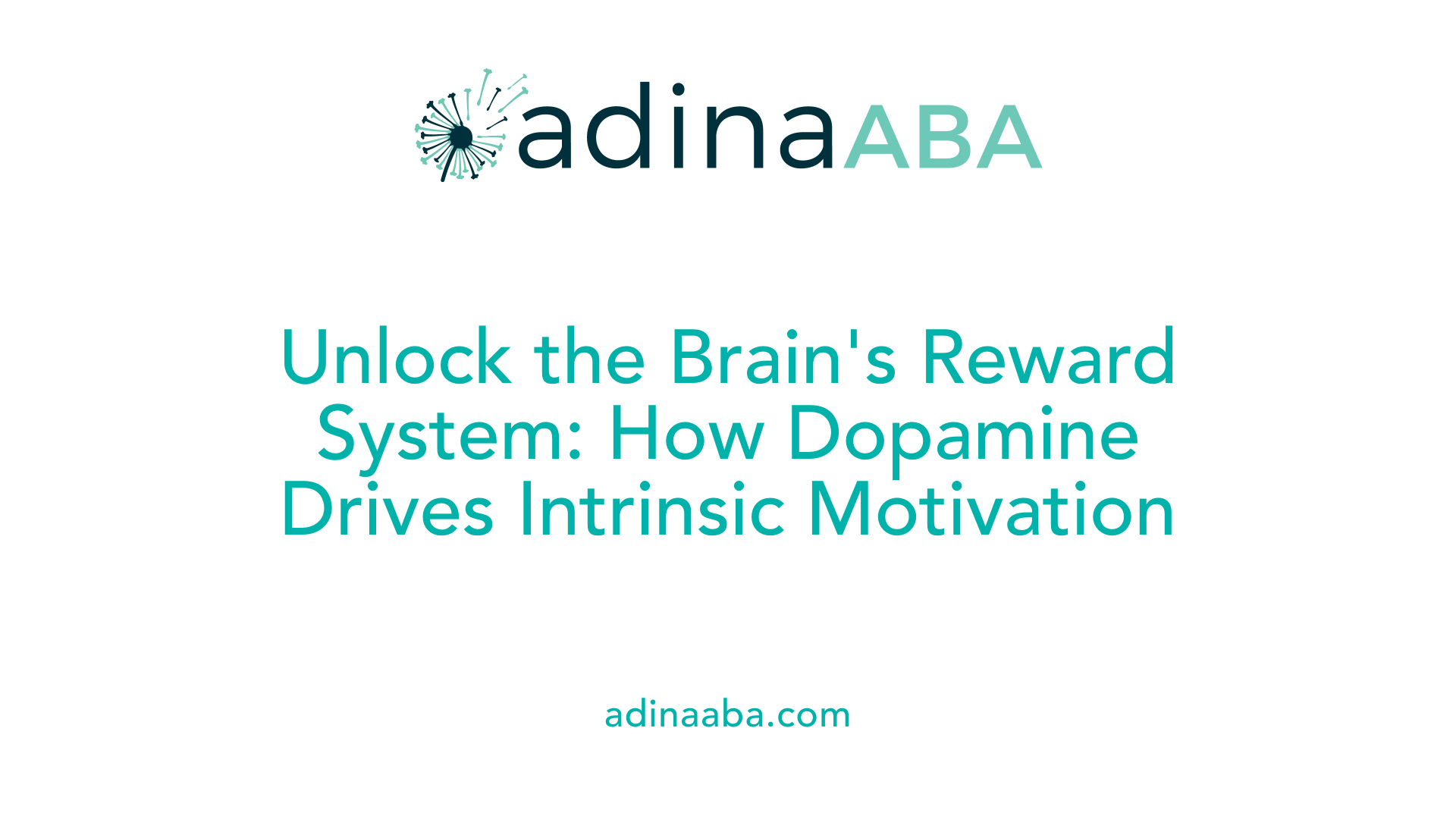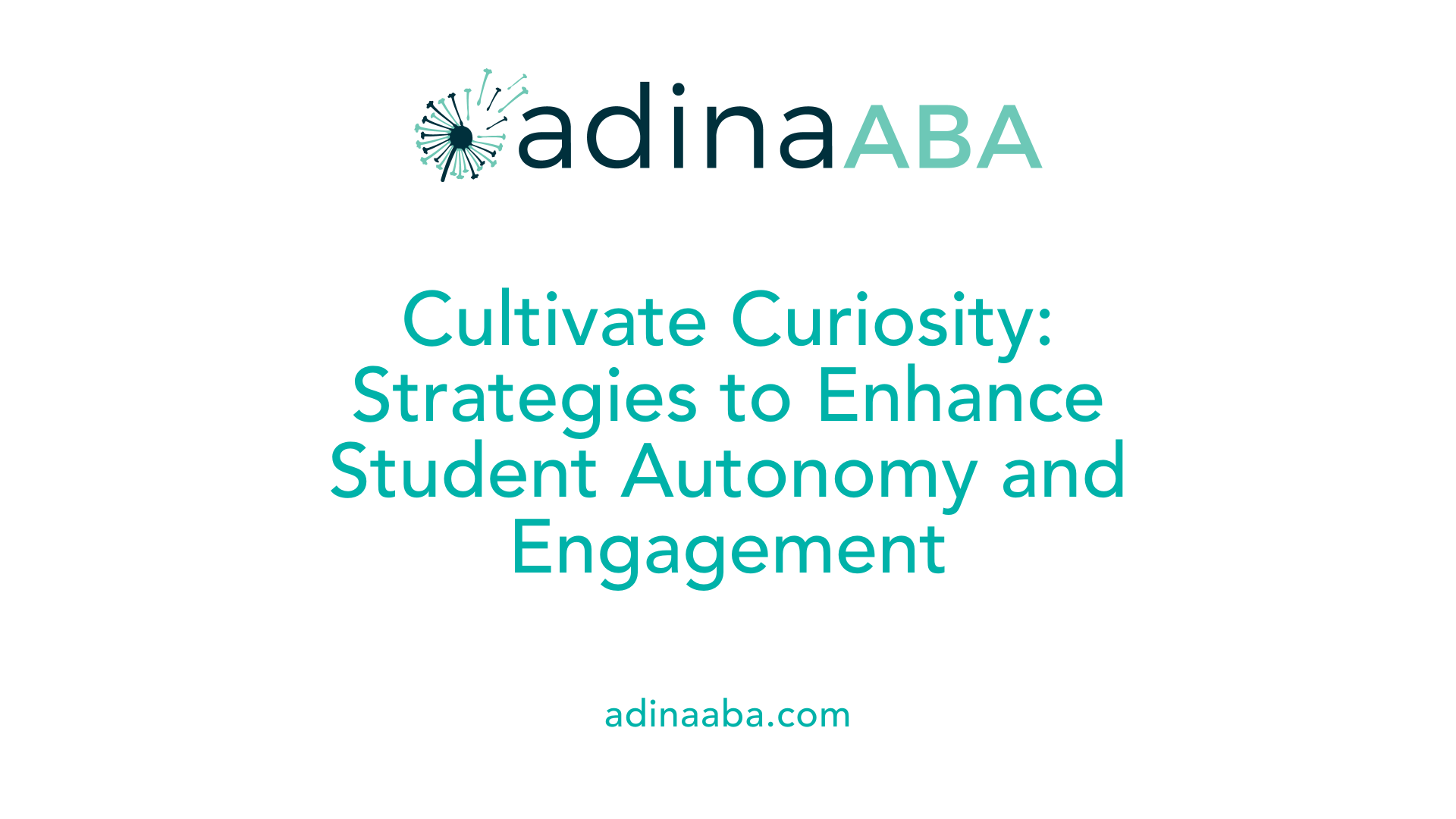Supporting the development of internal motivation

Understanding Internal Motivation in Education
Internal or intrinsic motivation is a powerful driver of engagement, persistence, and deep learning. Rooted in personal interest, enjoyment, and a sense of purpose, it fosters behaviors that are sustained over time and are not solely reliant on external rewards. Developing this form of motivation is crucial across all age groups and educational settings, as it leads to meaningful, self-directed learning and positive psychological growth.
Foundations of Intrinsic Motivation and Psychological Needs

What is intrinsic motivation, and why is it vital?
Intrinsic motivation refers to doing an activity because it is inherently interesting, enjoyable, or meaningful. Unlike extrinsic motivation, which depends on external rewards or punishments, intrinsic motivation comes from inside the individual.
When students are driven by internal factors such as curiosity or personal satisfaction, they tend to be more engaged, persistent, and successful. Activities like reading, exploring new hobbies, or solving puzzles become rewarding in themselves, encouraging deep learning and long-lasting habits.
What are the basic psychological needs according to Self-Determination Theory?
Self-Determination Theory (SDT) emphasizes three innate psychological needs that foster intrinsic motivation:
| Need | Description | Example in Education |
|---|---|---|
| Autonomy | Feeling volitional and having control over one’s actions | Choosing topics for a project or selecting a learning method |
| Competence | Feeling effective and capable in one’s activities | Receiving constructive feedback that highlights progress |
| Relatedness | Feeling connected and supported by others | Collaborating on group work or sharing experiences with peers |
Meeting these needs creates an environment where individuals feel motivated from within, rather than relying on external pressures.
How does satisfying these needs foster intrinsic motivation?
Supporting autonomy helps learners feel ownership over their activities, which leads to greater engagement. Providing opportunities to demonstrate mastery enhances feelings of competence, motivating learners to tackle challenges with confidence.
Building relatedness through social connections and positive relationships makes learning feel meaningful and supported. When these three needs are fulfilled, individuals experience a sense of internalization and self-determination.
Research shows that environments that satisfy autonomy, competence, and relatedness not only boost motivation but also promote well-being, resilience, and a lifelong love for learning. Conversely, neglecting these needs can lead to alienation, passivity, and decreased motivation.
In summary, fostering intrinsic motivation through satisfying fundamental psychological needs creates a positive cycle of engagement, achievement, and personal growth. Teachers and caregivers play a crucial role in designing supportive spaces where these needs are nurtured, enabling learners to thrive both academically and emotionally.
Neuroscientific Insights into Intrinsic Motivation

What neurobiological mechanisms underlie intrinsic motivation?
Intrinsic motivation is deeply rooted in our brain's reward and exploration systems. Central to this are the dopaminergic pathways, which originate from the ventral tegmental area (VTA) and project to regions like the nucleus accumbens and ventromedial prefrontal cortex (VMPFC). These pathways are crucial for experiencing curiosity and mastery, as they respond to novelty and challenge with bursts of dopamine, a neurotransmitter associated with pleasure, motivation, and learning.
When an activity sparks interest or the chance to solve a problem, these dopamine signals reinforce exploratory behaviors and engagement, energizing us to seek out new challenges purely for the intrinsic satisfaction they provide.
Beyond these reward circuits, larger neural networks play a vital role. The salience network, anchored in the anterior insula and dorsal anterior cingulate cortex, helps identify what’s important or worth paying attention to. This network dynamically switches activity to keep us focused on stimuli that are relevant to our internal goals and interests.
Simultaneously, the default mode network (DMN), which is active when we're passively reflecting or mind-wandering, diminishes its activity during task-focused states. Intrinsic motivation involves a seamless switching between the DMN and the central executive network, which is engaged during goal-directed tasks.
Neuroimaging studies show that when individuals are engaged in activities driven by curiosity or flow, there is increased activity in dopamine-related areas, the salience network, and regions associated with attentional control. This coordination supports sustained engagement and deep processing without external rewards.
In essence, intrinsic motivation hinges on an intricate neural dance—where dopamine energizes exploration, the salience network filters relevant stimuli, and the balance between internal reflection and external focus enables us to pursue meaningful tasks for their own sake.
Educational Strategies to Cultivate Intrinsic Motivation

How can teachers promote a sense of autonomy in their students?
Fostering autonomy is crucial for intrinsic motivation. Teachers can support this by offering students choices in their learning activities, such as selecting topics for projects or different ways to demonstrate understanding. Using language that emphasizes student control and agency, rather than controlling directives, also helps create a sense of volition. Incorporating student voice through polls, discussions, and feedback allows learners to lead their educational journey.
What role do goals play in developing intrinsic motivation?
Creating meaningful and achievable goals drives students to stay engaged and feel competent. Short-term, specific, and moderately challenging goals help build confidence and motivation. Teachers can facilitate goal-setting by guiding students to plan and track progress, using tools like calendars or progress charts. Emphasizing effort and progress over perfection encourages a growth mindset and persistence.
How important is feedback in nurturing intrinsic motivation?
Positive, constructive feedback focused on the learning process rather than just outcomes fosters intrinsic motivation. When students receive praise for effort, strategies, and perseverance, they develop a sense of competence. Regular reflection activities, such as group discussions or exit tickets, allow learners to understand their mistakes, reflect on their progress, and internalize their growth.
How can storytelling, real-world application, and student choice enhance motivation?
Connecting lessons to real-world scenarios increases their relevance, which strengthens students' sense of purpose. Using community challenges or case studies demonstrates how learning impacts society, fueling curiosity and engagement. Offering choices about topics, projects, or formats makes learning more personal and satisfying, encouraging students to pursue their interests actively.
| Strategy | Implementation Examples | Expected Outcome |
|---|---|---|
| Support autonomy | Student-selected topics, voice in classroom activities | Increased engagement and intrinsic interest |
| Set clear, challenging goals | Short-term targets, progress tracking with visual aids | Fosters mastery and confidence |
| Use process-focused feedback | Praise effort, problem-solving strategies, reflection activities | Develops competence and persistence |
| Connect learning to real-world relevance | Community projects, guest speakers, practical case studies | Enhances purpose and motivation |
| Incorporate choice in activities | Choice boards, varied project formats, flexible assessments | Boosts autonomy and personal growth |
Supporting students' basic psychological needs—autonomy, competence, and relatedness—through these strategies creates a motivating environment. This approach not only enhances engagement but also promotes deeper learning and long-term interest in education.
Fostering Internal Motivation through Classroom Environment and Relationships

Creating a supportive, trust-filled environment
A classroom that is safe, welcoming, and trusting encourages students to feel comfortable taking risks and exploring new ideas. When students sense they are cared for and supported, their innate desire to learn and grow is strengthened. Establishing positive relationships and showing genuine interest in each student’s well-being fosters a sense of belonging and relatedness, which are crucial for internal motivation.
Encouraging student voice and agency
Allowing students to have a say in what and how they learn increases their sense of autonomy. Offering choices, such as selecting topics, projects, or presentation methods, empowers students and makes learning more relevant to their interests. When students feel they can control their learning journey, their engagement and intrinsic motivation soar.
Building social connections and collaboration
Facilitating group work and collaborative tasks helps students develop social bonds and a sense of community. Working together on meaningful projects promotes relatedness and shared purpose. These social interactions are vital for cultivating motivation rooted in internal interests and peer support.
Recognizing effort and progress
Rather than solely praising outcomes, acknowledging effort, strategies, and improvement nurtures a growth mindset. Specific and sincere feedback about a student’s perseverance and strategies encourages ongoing effort and resilience. Celebrating small successes reinforces feelings of competence and motivates students to persist.
How can internal or intrinsic motivation be cultivated in learners?
Internal or intrinsic motivation can be cultivated by creating environments that support the psychological needs of autonomy, competence, and relatedness, as outlined by Self-Determination Theory. Providing learners with meaningful goals, opportunities for mastery, and choices in their activities fosters a sense of control and personal relevance, which enhances intrinsic interest. Engaging storytelling, framing activities within a compelling narrative, and connecting learning to students' personal values or real-world contexts can deepen their internal motivation. Offering specific, sincere, and private praise that emphasizes effort and strategy reinforces competence and perseverance. Additionally, fostering curiosity, promoting autonomy-supportive teaching practices, and designing activities that induce positive emotional engagement can help sustain long-term intrinsic motivation.
Applying Research to Promote Long-term Motivation

What are evidence-based practices for promoting long-term internal motivation?
Promoting sustained internal motivation in learners involves several research-backed strategies. At the core, fostering the psychological needs of autonomy, competence, and relatedness—concepts from Self-Determination Theory—is essential. Creating learning tasks that are meaningful, manageable, and aligned with students’ interests encourages intrinsic engagement.
Implementing activities that stimulate dopamine pathways and neural circuits associated with curiosity and mastery—such as engaging in challenging tasks, flow experiences, and social interactions—helps maintain curiosity over time. These neurobiological insights inform practices like encouraging exploration and rewarding effort rather than just outcomes.
Setting achievable, short-term goals and celebrating small successes enhance students’ sense of competence and self-efficacy. This builds confidence and motivation to pursue further challenges.
In addition, incorporating storytelling and future envisioning techniques can help students see a meaningful purpose in their learning, strengthening their internal drive. Encouraging self-reflection and self-regulation allows learners to monitor their progress and adapt strategies, reinforcing their autonomy and commitment.
Creating a supportive environment with positive feedback is crucial. Recognizing progress, discussing future goals, and using motivational interviewing techniques—such as eliciting 'change talk' and respecting ambivalence—can significantly boost intrinsic motivation.
Overall, integrating these evidence-based practices leads to a resilient internal motivation that persists beyond external rewards, fostering lifelong learning and personal growth.
Intrinsic Motivation and Developmental Perspectives
How does intrinsic motivation develop across different age groups?
Intrinsic motivation evolves throughout a person's life, shaped by biological changes, psychological growth, and social influences. In early childhood, curiosity and a natural desire to explore help children develop intrinsic motivation. Activities like playing, shaping, and discovering offer immediate satisfaction, driven by brain circuits involving dopamine, the neurotransmitter linked to pleasure and reward.
As children grow into adolescence, they acquire better control over their internal states and become capable of more deliberate motivation. The development of executive functions and metacognitive skills allows teenagers to reflect on their interests and set personal goals, enhancing their capacity to sustain motivation based on mastery, autonomy, and purpose.
In adulthood, intrinsic motivation often aligns with meaningful personal goals and self-direction. Adults tend to find motivation by pursuing activities that connect to their values, careers, and life purpose. Their motivation can be influenced by cultural and environmental factors that reinforce their sense of competence and relatedness.
Older adults experience changes in neural systems that support motivation, which can impact their curiosity and satisfaction. However, maintaining engagement through purposeful activities, social connections, and opportunities for mastery can help sustain intrinsic motivation.
| Age Group | Main Motivation Drivers | Neural and Psychological Factors | Influences |
|---|---|---|---|
| Children | Curiosity, mastery | Dopaminergic circuits, VTA, nucleus accumbens | Environment, parental support, playful learning |
| Adolescents | Autonomy, mastery, future focus | Executive functions, self-regulation | Social context, peer influence, education quality |
| Adults | Self-fulfillment, purpose | Brain regions involved in self-referential thinking | Career, personal development, cultural values |
| Older Adults | Well-being, social connection | Neural plasticity, reward system | Health, social support, meaningful engagement |
By understanding how intrinsic motivation develops at different life stages, educators and caregivers can tailor their approaches to foster ongoing curiosity, mastery, and purpose throughout life, supporting personal growth and well-being.
Fostering a Culture of Intrinsic Motivation
Supporting the development of internal motivation is a multifaceted endeavor that involves nurturing basic psychological needs, understanding neurobiological underpinnings, and applying effective educational and interpersonal strategies. By creating environments that promote autonomy, mastery, and purpose, educators and individuals alike can cultivate a love of learning that persists throughout life. Embedding these principles in everyday practices fosters resilience, creativity, and lifelong engagement, ultimately leading to more fulfilling educational experiences and personal growth.
References
- Help Students Build Intrinsic Motivation - Edutopia
- How to Instill Intrinsic Motivation - 7 Mindsets
- The Emerging Neuroscience of Intrinsic Motivation: A New Frontier ...
- Intrinsic Motivation: How to Develop it - WebMD
- 5 Ways to Grow a Student's Intrinsic Motivation
- [PDF] Twelve tips to stimulate intrinsic motivation in students through ...
- Intrinsically Motivated | Harvard Graduate School of Education
- Motivation: Top Twenty Principles 9-12 for Early Childhood Education
- How to Increase Intrinsic Motivation (According to Science)
More Resources
Expert Clinicians
Get started today ->



.jpg)


.jpg)